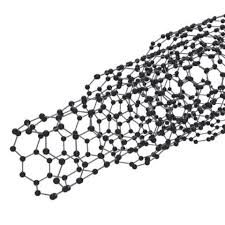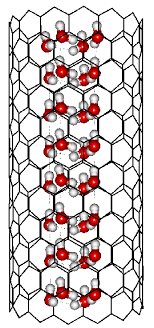CNTs Carbon Nanotubes and their Different Applications in Power Distribution Networks (Based on Nano-Microelectronics PhD)
Researcher and author: PhD student Afshin Rashid
Note: The use of nanotechnologies in power transmission lines significantly reduces power losses while making network reliability significantly easier to carry out. One of the most widely used technologies in the electrical industry is carbon nanotube CNTs , a hollow cylinder made of carbon atoms.
Carbon nanotube wires have an important role in increasing electrical conductivity and mechanical strength. The conductivity of carbon nanotube cables can be increased by doping with iodine to higher metals such as copper and aluminum. And while they weigh much less than one-sixth of the metal wire. The outermost tensile strength of a CNTs (multi-walled) carbon nanotube is 100 times higher than that of aluminum. Carbon is one of the most amazing elements of nature found in nature in four ways. All four form solid and include nanotube diamond graphite and buckle wings. The physical size and shape of nanomaterials and how their interatomic bonding has a great influence on the properties of the materials; the most important physical property of the nanotubes is their "electrical conductivity". The electrical conductivity of nanotubes varies greatly from one to another depending on the angle and type of bonds; each atom vibrates in its position, when one electron (or electric charge) enters a set of atoms, the atom vibrates. Increasingly, they transmit electric charges as a result of each other. The higher the order of the atoms, the greater the electrical conductivity of the nanotubes. The carbon sequestration order of the nanotubes is divided according to their conductivity; for example, the nanotube is more than 1000 times more conductive than copper, whereas the zigzag and asymmetric types are semiconductor. The semiconductor property of nanotubes varies according to their type. Many applications of carbon nanotubes have so far focused on small-scale applications. The carbon sequestration order of the nanotubes is divided according to their conductivity; for example, the nanotube is more than 1000 times more conductive than copper, whereas the zigzag and asymmetric types are semiconductor. The semiconductor property of nanotubes varies according to their type. Many applications of carbon nanotubes have so far focused on small-scale applications. The carbon sequestration order of the nanotubes is divided according to their conductivity; for example, the nanotube is more than 1000 times more conductive than copper, whereas the zigzag and asymmetric types are semiconductor. The semiconductor property of nanotubes varies according to their type. Many applications of carbon nanotubes have so far focused on small-scale applications.
The properties of CNTs nanotubes can be cited as the basic transmission lines for structural materials. Carbon nanotube fibers can be produced up to several hundred meters in size using a superacid solution.
Transmission and distribution of electrical energy by the structure of CNTs carbon nanotubes
The electrical conductivity of nanotube cables can be as high as the conductivity of metal wires, while their weight is much lower. Made two-walled carbon nanotubes for power transmission cable and performed the standard voltage transmission network voltage. K Bell of highly conductive carbon nanotube based cable-like performance can be conventional metal, and at the same time is about one-sixth of their weight. These cables can be widely used in applications such as the aviation and automotive industries where weight is an important factor .
Conclusion :
The cables are made of pure CNTs nanotubes and can be knit together without losing their conductivity. To increase the conductivity and stability of these cables, the nanotubes can be doped with iodine. The ratio of conductivity to weight ratio , called the specific conductivity , is higher for these nanotubes than for metals such as copper and silver . And it's easier for the network to transmit and less to waste.
Author: Engineer Afshin Rashid
PhD student of Nano-Microelectronics at Islamic Azad University, Science and Research Branch, Tehran




